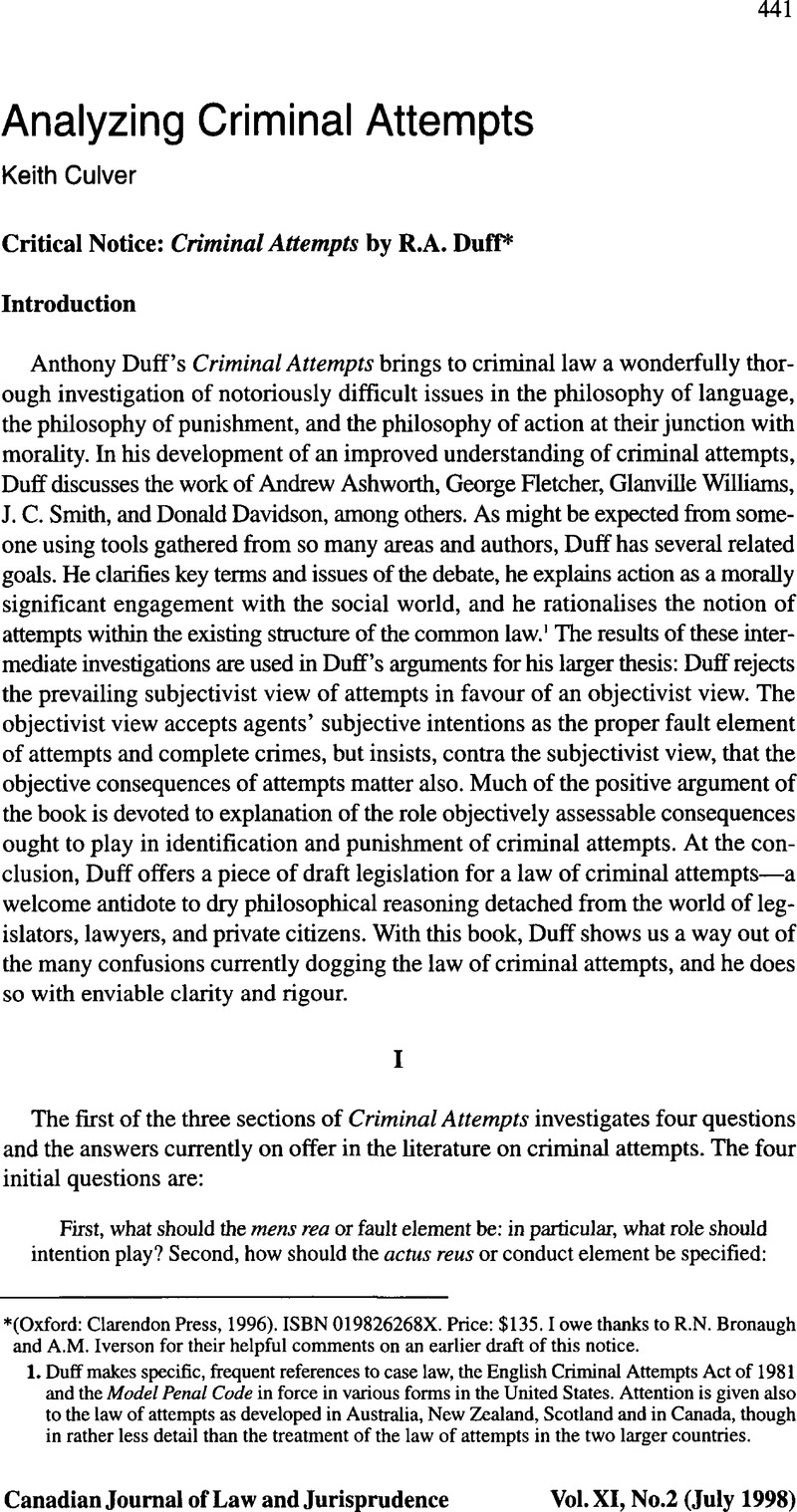No CrossRef data available.
Published online by Cambridge University Press: 09 June 2015

1. Duff makes specific, frequent references to case law, the English Criminal Attempts Act of 1981 and the Model Penal Code in force in various forms in the United States. Attention is given also to the law of attempts as developed in Australia, New Zealand, Scotland and in Canada, though in rather less detail than the treatment of the law of attempts in the two larger countries.
2. R. A. Duff, Criminal Attempts. All page references are to this work.
3. Quoting the Commentary to the Model Penal Code s. 5.01, 323.
4. Quoting the Model Penal Code s. 5.01(l)(c).
5. Citing in note 194, Jones [1990] 1 WLR 1057, 1060–1 (Lord Taylor).
6. See the ‘principle of fair labelling’ at 351.
7. Duff discusses Taaffe [1983] 1 WLR 627 (CA) at length at 93ff.
8. Duff provides extensive discussion of Anderton v. Ryan, in which the issue of the proper description of agents’ intentions is paramount. Mrs. Ryan intended to obtain an inexpensive videocassette recorder, and was not particularly concerned about its origin; in fact, she believed it was stolen. She was clearly reckless as to whether the videocassette recorder was stolen, yet it was not explicitly part of her intentions that the videocassette recorder be stolen. Can she be held liable for attempted handling of stolen goods? Only on an account of attempts which fails to distinguish adequately between specific and oblique intentions. Duff’s fault element test is proposed as a way to avoid this confusion.
9. Ibid., 193. Citing A. J. Ashworth, “Criminal Attempts and the Role of Resulting Harm under the Code, and in Common Law” (1988) 19 Rutgers L. J. 742.
10. See also 305, “Our intended actions are engagements with an ‘objective’ material and social world; their success or failure are not ‘extrinsic’ consequences, but are intrinsic to the actions as we understand them.”
11. Ibid, at 301. Duff also writes at 169 that “The specification and application of any test for the conduct element in attempts involve an essentially normative judgment: about how far an agent must have progressed in a criminal enterprise to be properly convicted of an attempt. That judgment might fall to be made by the legislature, the judge, or the jury—but not by the defendant herself.”
12. Ibid, at 178.
13. See Duff’s Trials and Punishments (Cambridge: Cambridge University Press, 1986).
14. Criminal Attempts at 200–01.
15. Ibid, at 398.
16. Ibid.
17. See ibid, at 42.
18. See Dennis Patterson, Law and Truth (Oxford: Oxford University Press, 1996) ch. 7.